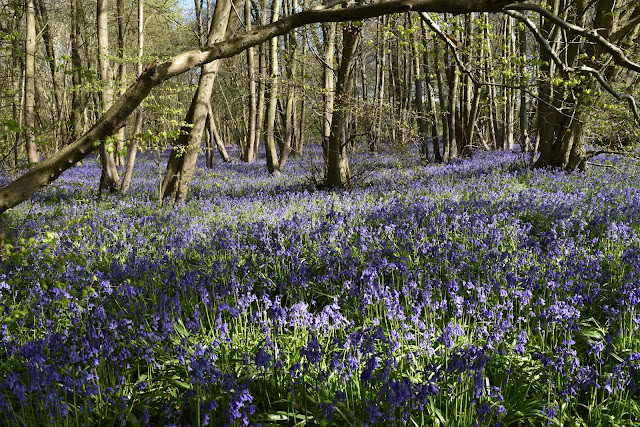Seen on my walk - bluebells and more.

The `Lock Down` to continue for three more weeks - so went the news. Oh well, just more long walks with the camera, in the sunshine. What a shame!! Several interesting plants this few days which make me glad I live on the edge of the countryside. Most of the images of plant life were taken on this one walk What would the Spring season be without Bluebells? Here are a couple if images taken from the edge of some woods in Layham. With some really good weather this year they really are looking spectacular. Lone Bluebell on the roadside. Rands Farm in a lovely setting at the end of Rands Lane. Love the shape of this tree on the pathway leading to Bullocky Fen. I am told the name comes from years gone by when drovers took their cattle down this lane to drink at the lake. Beautiful lake owned by Hadleigh Fishing Club , tucked away at the bottom of this lane. What a spot. Nearby, some Horsetails....

